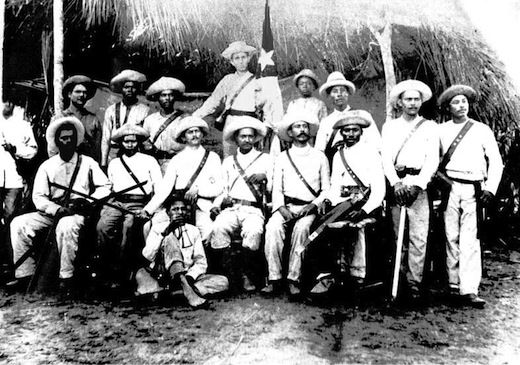
Today, Oct. 7, in 1886 slavery was finally abolished in Cuba by Spanish royal decree that also made an indentured servitude system, known as “patronato,” illegal. Cuba’s first record of slavery was in 1513, and the first large group of slaves – kidnapped from Africa – to arrive in Cuba was in 1520. Slave trafficking surged during the British occupation of Havana. Sugar production grew, becoming Cuba’s number one slave-produced crop.
Slave uprisings challenged the system of oppression and exploitation. In 1795, Nicolás Morales, a free black, led a slave revolt that began in Bayamo and spread throughout the eastern part of Cuba. This revolt included blacks and whites. The Spanish army quickly suppressed it. According to “A History of Cuba and its Relations with the United States, Volume I, 1492-1845,” the multi-racial character of the uprising, “especially disturbed the slave-owners,” as did their demand of black and white equality.
Similarly, in 1812, another free black, José Aponte, organized a revolt of slaves and free people of color to overthrow both slavery and Spanish colonialism. In addition to those two objectives, the uprising demanded an end to the slave trade and a society based on racial equality. Aponte and his fellow leaders were captured and brutally executed, with their heads put on display as a warning against any other rebellions. Eight years later, however, the legal slave trade into Cuba was abolished through a treaty between Spain and England. Although for the next ten years 60,000 more slaves were brought into Cuba.
After the 10 Years’ War for independence, slaves who fought for either the Spanish or the Cuban anti-colonialists, were granted freedom in 1878.
Black Cubans faced racial discrimination after the 1886 abolition of slavery, but became the backbone of the Cuban independence movement and its Liberation Army (“Los Mambises”). Antonio Maceo was one of the greatest military commanders in both the 1868 and the 1895 wars for independence. Called the “Bronze Titan,” Maceo was one of the most important leaders in Cuba’s fight for independence from Spain.
Even after independence, racial discrimination and segregation persisted from time the U.S. intervened in the Cuban war for independence, leading to the Spanish American war, until the 1959 fall of U.S.-supported dictator Fulgencio Batista during the Cuban Revolution.
While problems of racism exist (it hasn’t been “possible to completely erase that ballast of colonial slavery,” writes Esteban Morales), Black Cubans have made great gains since the revolution.
For a timeline of events in the struggle against slavery and for liberation go to afrocubaweb.com.
Photo: Cuba’s “Mambises” fighters (via afrocubaweb.com)











